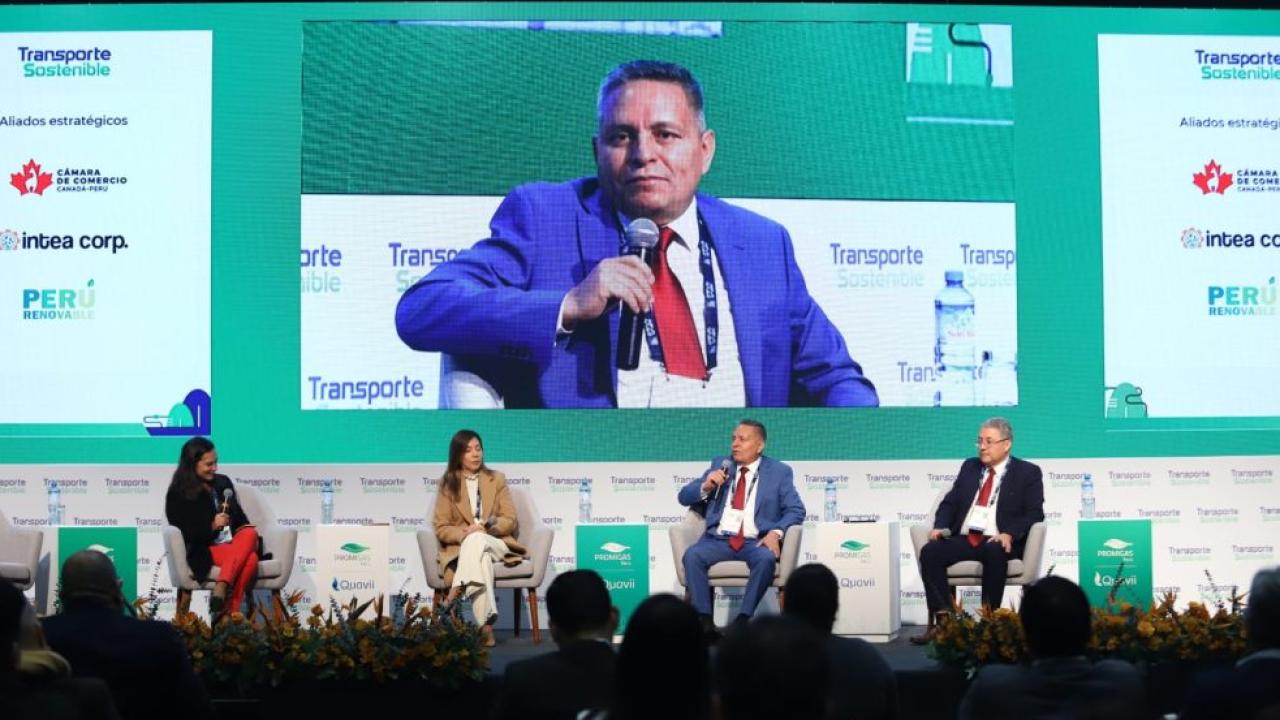
With the goal of achieving zero carbon emissions by 2050, representatives of mining companies and transporters in Peru discuss the challenges of introducing natural gas and electromobility to heavy cargo transport.
Mining plays a fundamental role in the energy transition. To begin with, it provides the metals necessary for this process to materialize and its production chain can reduce costs through clean energy. It is not surprising then that this is a topic of discussion in Peru, the second largest producer of silver, copper and zinc worldwide.
For example, for Evelyn Serrano, Logistics Manager at the mining company Nexa Peru, mining must “move” with the world, but advancing in favor of social demands. With the goal of reaching zero carbon emissions by 2050, this vision is a challenge, especially if mining logistics involves 70% emissions. Such a scenario requires drastic decisions, but sustainable in the long term.
“We have changed some suppliers for others that are closer to the mining unit. It is logical, because in this way we reduce the number of fleet and the mileage we travel. So, this helps us to reduce the amount of emissions. Another important point is that at Nexa we have a special area that analyzes how many emissions we have, whether they are scope one, two or three,” Serrano said at the panel discussion “Mining and the mobility of the future,” at the “Sustainable Transport” convention held in Lima.
Likewise, from the perspective of the transport sector, Luis Barthé, general manager of Transportes Sol del Pacífico , highlighted the importance of changing the energy matrix in heavy vehicles. Although for the company, dedicated to the transport of materials from mining companies such as Las Bambas and Volcan, it is a process still in its initial stages. “Today we already use Euro 5, but it is still diesel. And one of the greatest impacts we have on the communities is pollution, even though it is minimal. In this case, the use of liquefied natural gas (LNG) is important,” said Barthé.
For his part, José Estela, Superintendent of Energy Projects at Minera Poderosa, stated that for the company, transportation represents 50% of its carbon footprint. In addition to this percentage, there is an additional challenge involving the high logistical cost of transporting minerals from the town of Pataz, in the mountains of northern Peru at 4,000 meters above sea level, to the city of Trujillo, on the coast.
It involves a journey of more than ten hours, which can increase during the rainy season. In addition, the nearest electrical substation is more than 50 km away, so Poderosa was forced to resort to self-generated electricity.
“Last year, we self-generated 14 and 15% with thermal generators. This year we increased to around 20%, generating electricity with diesel and that is because operations are growing every day. We currently produce 1,800 metric tons of dry mineral in two concentration plants and we are going to grow to 3,000 tons by 2030, which means more transportation, as well as more consumption of fossil energy and electricity,” said Estela.
For her part, Serrano reaffirmed the idea that the main obstacle to the energy transition in Peruvian mining is the country's rugged geography. "Trying to convert the majority of heavy vehicles to electromobility is complicated. Perhaps it can be an achievable alternative in five years, but we cannot wait, so we must resort to those technologies that already exist such as CNG, LPG and green hydrogen," said the Nexa spokesperson.
To illustrate how a sustainability strategy is being promoted, Serrano outlined Nexa's ESG programme, which includes goals such as reducing CO2 produced to 52,000 tonnes by 2030. One of the first steps is to use CNG-powered trucks, as well as underground mining equipment and electric forklifts. The latter also serve to reduce noise pollution, which is typical of mining sites.
Meanwhile, at Sol del Pacífico, Barthé says that the carrier has decided to abandon its commitment to NGV, due to the fuel's "limited autonomy" and its high weight: a tank of vaporized gas covers 10% of the total mass of a cargo truck, "So we launched into importing LNG trucks and today we already have a significant fleet that has had a positive response from our clients, who welcome the fact that we use a much cleaner fuel," he said.
However, in other cases, change can be resisted, even by trusted partners. As an example, Estela says that Minera Poderosa introduced its first electric bus and an electric charging station to the electric charging station, although with initial resistance.
“We really had a hard time convincing one of the contractors to take on this challenge, because our entire fleet is owned by third parties. They told us that we had no experience operating electric buses, so they decided not to invest and we had to cover all the costs of the vehicle. They didn’t believe that an electric bus could handle travelling at 3,000 metres above sea level, but they were wrong,” he explained.









